Waste & Ore Pass Design @ Underground Transfer Points
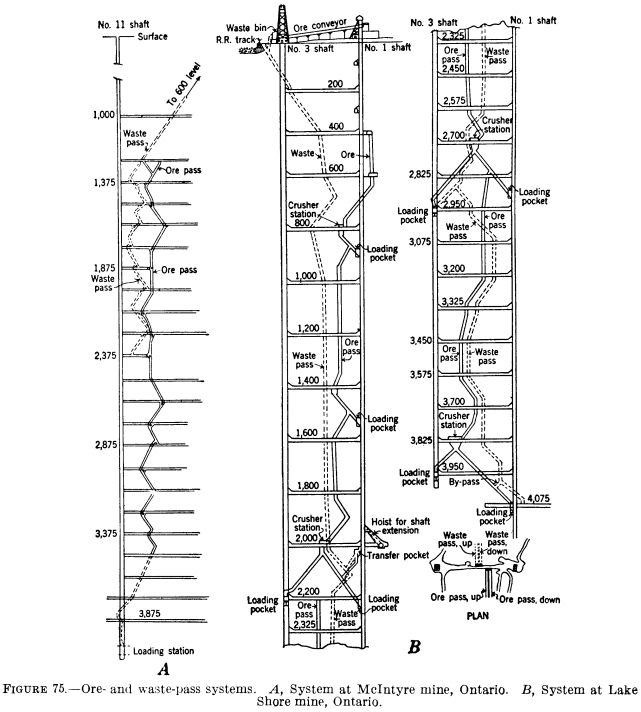
Ore passes are simply vertical or inclined openings for transfer of broken ore to the haulage system. They may be raises in the ore or in the walls of the deposit or timbered openings through filled stopes and, as previously stated, usually terminate at the bottom in some form of loading chute. They must be […]
Underground Ore Loading Chutes; Ore Chute Design
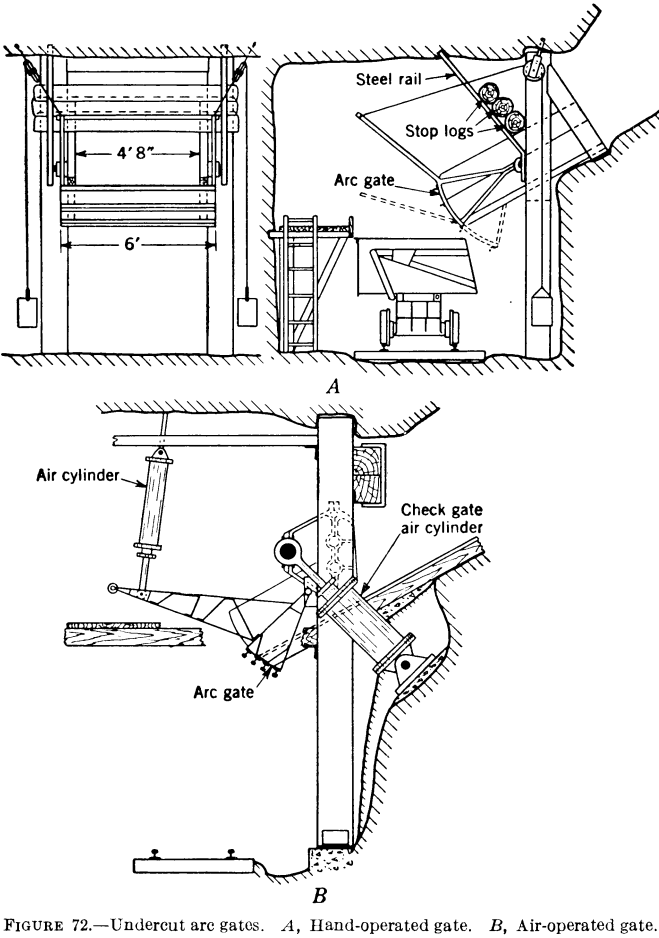
Gravity usually is employed wherever possible to move broken ore from stopes to the haulage levels, and ore-passes from the stopes terminate at the bottom in chutes, by means of which the flow of the ore into cars or onto conveyors can be controlled. An exception is where scraper haulage is employed on the level […]
Underground Mining Transportation & Haulage Systems
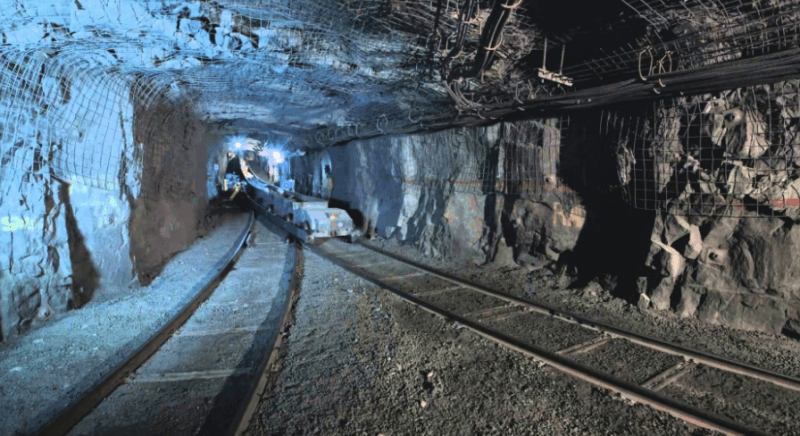
Transportation of Ore and Waste For the purpose of this discussion, “transportation” signifies the operations involved in transporting ore and waste from the face or stope where it is broken to the surface but not the handling of the ore within the stopes, which will be discussed under Stoping. It therefore includes loading cars from […]
Mining Stope Development Method
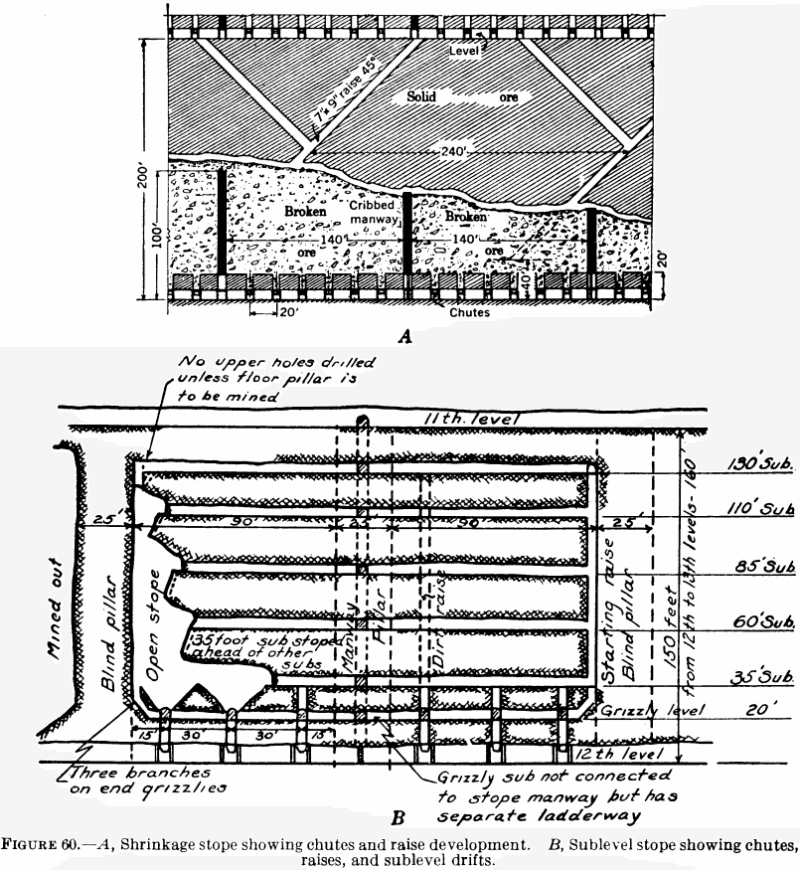
Stoping The foregoing discussion relates to general mine development and covers the work required to reach and penetrate the ore bodies and to provide the main arteries through which the ore is taken from the mine. These arteries provide mine drainage and avenues for travel and transportation of men and supplies and for installation of […]
Mining Levels: Stations, Drifts, & Crosscuts
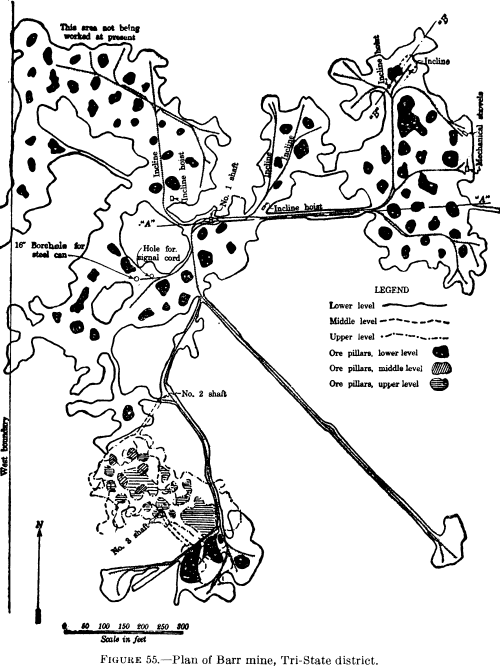
Lateral Development In tabular, dipping lodes and thick massive deposits the ore bodies are developed laterally at several horizons spaced at more or less regular vertical intervals. In areas of high relief each horizon may be developed by driving an adit into the side of the hill, from which branch headings are driven as required. […]
Mine Shaft Sinking Methods
Conventional mine shaft sinking methods involve the performance of a cycle of different operations—drilling and blasting, removal of smoke and cleaning of fly-rock lodged on overhead timbers, mucking and hoisting of the broken rock, and timbering. The latter (a) may be the last operation of the cycle, (b) may be carried on during drilling and […]
Mine Shaft Sinking Equipment
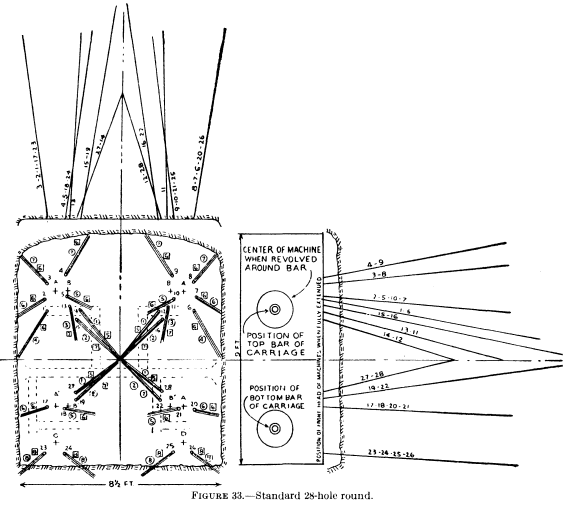
The technical literature is replete with descriptions of and data on shaft sinking equipment, methods and costs. The subject of shaft sinking has been discussed at some length in an earlier Bureau of Mines bulletin. A number of shaft-sinking operations are described in detail in the series of information circulars on mining methods and costs, […]
Driving an Underground Mine Adit: Methods & Equipment
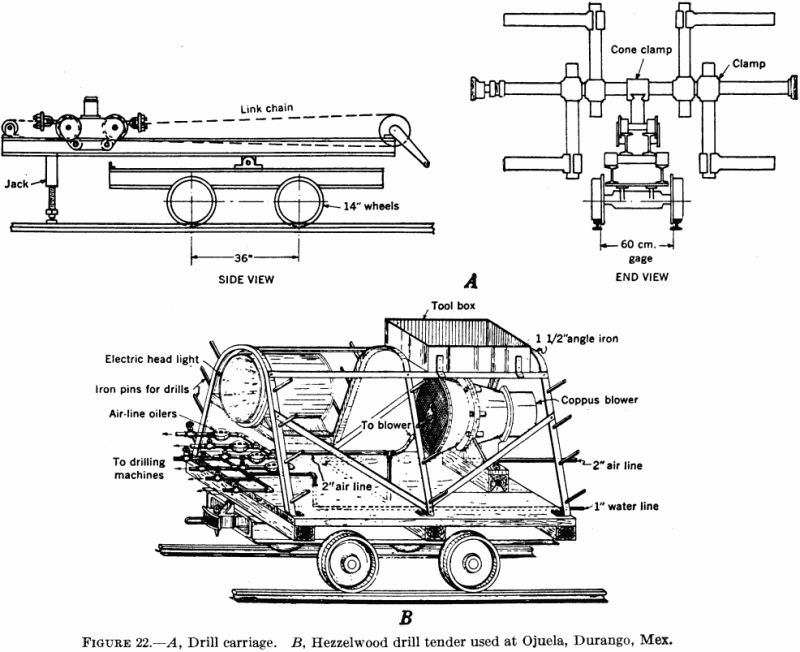
Although practices in vogue for many years are still employed in small-scale operations, decided advances have been made, particularly in the last decade and especially in connection with large-scale operations. Contributing to this are introduction of mechanical loading equipment, mechanical ventilation, availability of cheap power, improved rock-drilling equipment, use of drill carriages and tenders in […]
How to Select a Mine Entrance Location
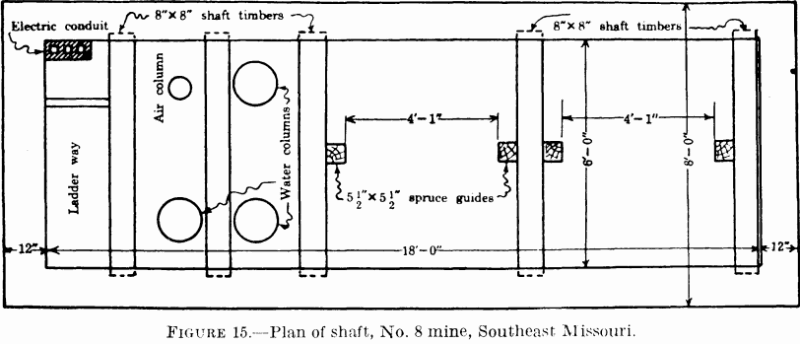
The main opening is usually a permanent one that will be utilized throughout the life of the mine. It should, therefore, be so situated relative to the ore bodies that it will not be disturbed by ground movement caused by ore extraction and with a view to low maintenance cost. It is advantageous, other things […]
Ore Reserve Estimation Method
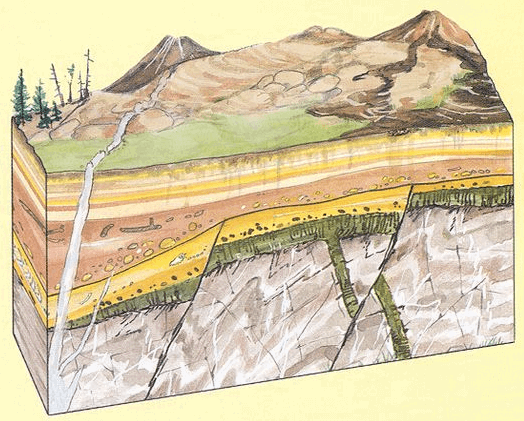
Estimates of the tonnage and average grade of ore deposits (ore-reserve estimates) are made for various purposes. They may be made by examining engineers as a basis for placing a value on a mining property in connection with reports on behalf of owners or vendors, on the one hand, or for prospective purchasers or lessees, […]
